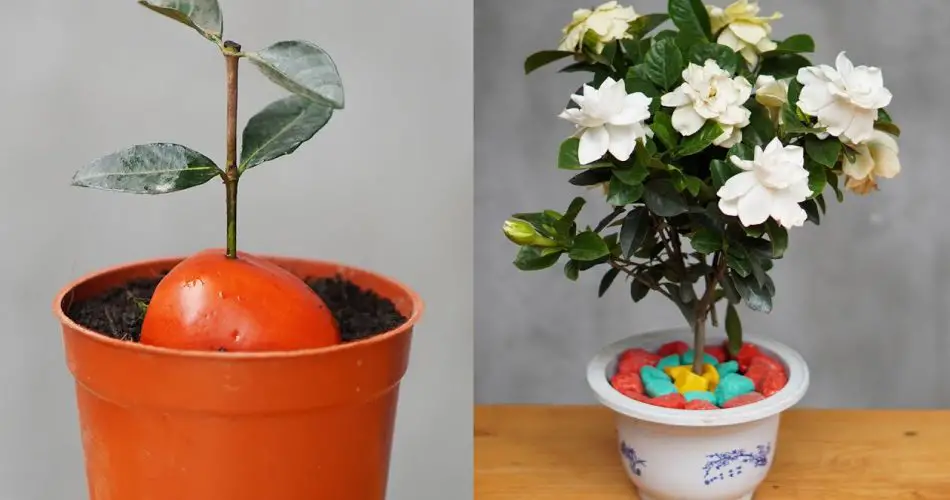
Expanded Propagation with Tomatoes:
- Selection of Tomatoes: Choose tomatoes that are ripe and free of any signs of disease or damage. Organic tomatoes are preferred as they are less likely to contain harmful chemicals that could affect the rhizomes.
- Preparing the Tomato Slices: After cutting the tomatoes into half-inch thick slices, it’s beneficial to use a paper towel to gently blot any excess moisture from the top surface. This step helps to prevent mold growth without drying out the tomato slice.
- Rhizome Preparation: Before pressing the rhizomes into the tomato slices, inspect the White Lily of the Valley rhizomes for any signs of damage or disease. Select healthy sections with at least one or two growth points (buds). This ensures a higher success rate for propagation.
- Environment for Root Development: The ideal environment for root development is warm (about 68-77°F or 20-25°C) with high humidity. Covering the tray with a clear plastic dome or wrap can help maintain humidity levels. However, ensure to ventilate occasionally to prevent mold growth.
- Monitoring and Care: Check the progress every few days, ensuring the tomato slices remain moist but not overly wet. If mold begins to form on the tomato slice, gently remove the affected area to prevent it from spreading.
Detailed Transplanting Guide:
- Soil Mixture: For the soil mixture, a ratio of 60% potting soil to 40% organic compost provides a nutrient-rich base. Adding perlite or vermiculite can enhance drainage, which is crucial for White Lily of the Valley.
- Pot Selection: A pot that is 6 to 8 inches in diameter is usually sufficient for a single rhizome. Ensure the pot is deep enough to accommodate the developing root system without crowding.
- Transplanting Technique: Use a spoon or a small trowel to lift the Lily of the Valley and its attached roots gently from the tomato slice. Minimize root disturbance to prevent transplant shock.
Advanced Care Tips:
- Moisture Level: Use a moisture meter or the finger test (inserting a finger about 1 inch into the soil) to check moisture levels. White Lily of the Valley thrives in consistently moist soil, but overwatering can lead to root rot.
- Temperature and Sunlight: An east-facing window provides ideal light conditions for indoor plants. Outdoors, a spot that receives morning sunlight and afternoon shade is perfect.
- Fertilization Strategy: Opt for a fertilizer formulated for flowering plants, with an NPK ratio that supports root and flower development. Fertilizing early in the spring can kickstart growth after the winter dormancy period.
- Disease and Pest Monitoring: Keep an eye out for common pests like aphids and slugs, as well as fungal diseases. Neem oil or insecticidal soap can be used for organic pest control.
- Mulching and Winter Care: For outdoor plants, applying a layer of mulch can help retain soil moisture and protect the rhizomes during winter. In very cold climates, consider mulching with straw or pine needles for added insulation.
By following these expanded guidelines, gardeners can enhance the propagation and care of White Lily of the Valley using tomatoes. This unique method not only recycles kitchen scraps but also provides a natural, nutrient-rich medium for root development. With patience and proper care, you’ll be rewarded with the sweet fragrance and delicate beauty of White Lily of the Valley in your garden.